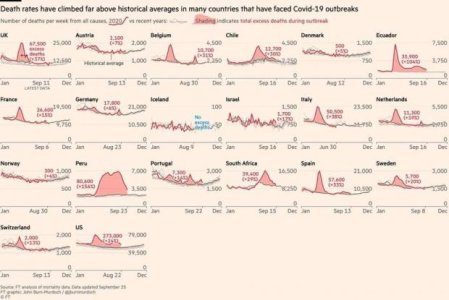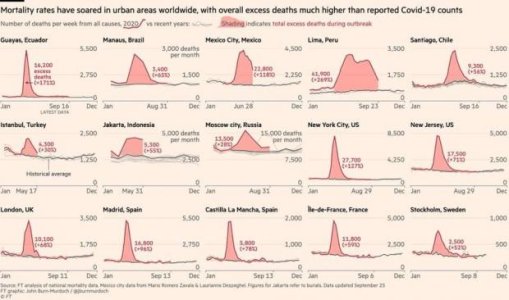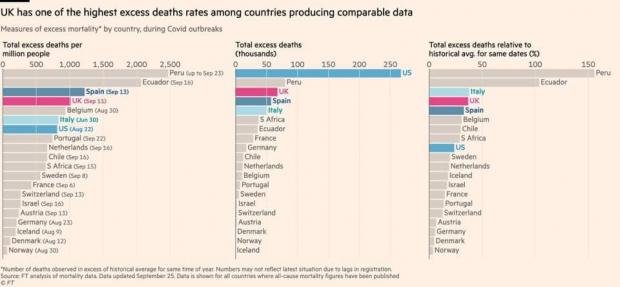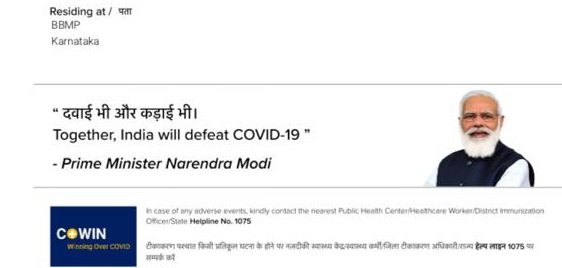https://www.theguardian.com/world/2020/oct/20/india-at-heart-of-global-efforts-to-produce-covid-vaccine
India at heart of global efforts to produce Covid vaccine
As the largest global supplier of drugs and producer of 60% of the world’s vaccines, India has long been known as the “pharmacy of the world”.
Now, as the frenzied hunt for a Covid-19 vaccine gathers momentum, the country is playing an increasingly strategic and central role in the development, manufacturing – and, crucially, possible future distribution – of several possible Covid shots.
With more than 7.5 million cases and about 115,000 deaths, India is also one of the worst affected countries by the virus, second only to the US.
A deal has already been struck for the Serum Institute of India, based in the city of Pune, to produce 1bn doses of the the Oxford/AstraZeneca vaccine, seen as the forerunner in the vaccine race. In anticipation of its success, it has already begun production of almost 2m samples of the vaccine and is carrying out phase 3 human clinical trials on thousands of patients spread across 15 Covid-19 hotspots in India.
This week, the Serum Institute of India said it was confident the AstraZeneca vaccine would be ready by December and would be licensed for distribution in India by March.
Covid vaccine tracker: when will a coronavirus vaccine be ready?
Read more
Adar Poonawalla, the CEO of the Serum institute of India, said he was “very optimistic” that more than one successful vaccine was imminent.
“A lot of the data that I have seen off-the-record in a lot of these vaccines is very promising and more than three to four vaccines will be successful very soon in the next year,” said Poonawalla.
The Serum Institute, which this week also began human trials on an intranasal Covid vaccine, is just one of the dozens of Indian companies in the running to produce the much-coveted vaccine, of which there are almost 200 different types being developed across the world.
Johnson and Johnson, whose Covid-19 vaccine is also in phase 3 clinical trials, has struck a deal with the Indian pharmaceutical company Biological E to produce up to 500m doses if successful.
Get Society Weekly: our newsletter for public service professionals
Read more
Bharat Biotech, a Hyderabad-based pharmaceutical company, has a deal to manufacture 1bn doses of Washington University’s intranasal vaccine, now in clinical trials, and Indian pharmaceutical giant Dr Reddy’s has a deal to do a phase 2/3 human trials in India of Russia’s controversial Sputnik vaccine and then produce 100m doses. There are also at least a dozen indigenous vaccines being developed within India.
All this places India, and therefore the global south, in a significant strategic and powerful position in terms of distributing the the vaccine, particularly domestically and to non-western countries. Poonawalla of the Serum Institute said that “50% of whatever quantity we manufacture will be kept for India and the remaining will go to low- and middle-income countries”.
In order to have the capacity to manufacture hundreds of millions of promised Covid vaccines, Poonawalla said the company would stop production of other vaccines destined for the US and Europe, such as measles, mumps, rubella and Hepatitis B, though still supply them to developing countries.
Mahima Datla, the CEO of Biological E, which will manufacture the Johnson and Johnson vaccine, took a different approach and said the company was committed to the Covax vaccine alliance, signed up to by 135 countries, which will push for equal procurement and distribution of the vaccine.
“We’ve never made trade-off decisions between the vaccine needs of India and global organisations such as Unicef,” said Datla. “So far we don’t have any obligations to reserve a certain amount of the vaccine for India. But in the future, there might be a demand-supply gap that might put us in that position.”
Yet the irony is that while India is one of the world’s biggest vaccine-producing nations, it faces one of the greatest global challenges in getting its 1.3 billion people immunised.
India has a highly effective immunisation programme for babies and pregnant women but there is nothing in place for the rest of the population, in particular the elderly who are the most vulnerable to coronavirus. The healthcare system, already overburdened, has been pushed to breaking point by the pandemic in many areas and swathes of rural India barely have access to healthcare at all.
India, which suffers from extreme heat, is also lacking adequate cold chain facilities, which ensure the vaccine is kept refrigerated, and therefore effective, until the moment it is administered. Some of the vaccines being developed might need to be stored at up to -70C.
There is also the matter of cost. The Serum Institute said it expected the vaccine to cost about $5 (£3.80). With the Indian government aiming to have 250 million people immunised by July 2021, it means it will need to raise $1.25bn to cover the costs.
“The complications in India are going to be phenomenal,” said Gagandeep Kang, an Indian professor of microbiology who is a member of the WHO’s global advisory committee on vaccine safety. “The main worry is the scale and the tracking – how do you know who got the vaccine and who didn’t – and the fact that the storage conditions needed are still an unknown.”
Yet Kang said even an more worrying threat lurks in India, that of a virulent anti-vaccine movement that had already gathered momentum in rural villages against the measles, mumps and rubella vaccine over the past five years. Kang said she had witnessed how anti-vaccine conspiracies had spread like wildfire in WhatsApp messages written in local languages, which had been very difficult to counter.
“I worry that the longer it takes for a Covid-19 vaccination programme to roll out in India, the more anti-vaccine conspiracies theories and resistance we will have to deal with,” said Kang.












